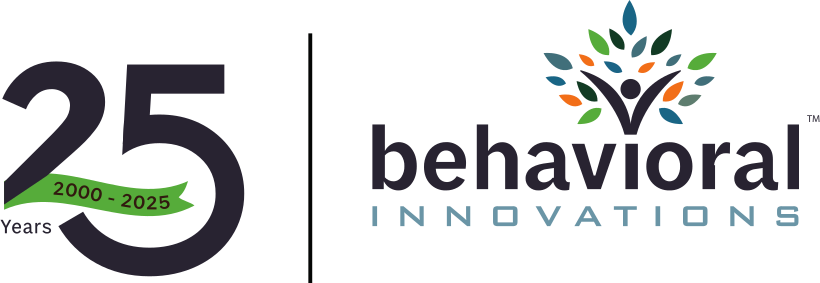
The current and future state of the healthcare and dental industries are on the brink of change. There is a rising demand for improved efficiency, enhanced accuracy, and individualized approaches to care, yet many are still utilizing outdated and inefficient legacy systems. Systems once considered state-of-the-art are now unable to meet the needs of today’s patients in essentially a paperless world. The call for change is not merely following the trends; these industries have to transform in order thrive in the current fast-changing environment.
Legacy systems in healthcare and dental care are basically relics from a time when paperwork ruled and departments didn’t talk to each other. These systems weren’t built for today’s tech-heavy, patient-focused world, and trying to mesh them with modern tools is like forcing a square peg into a round hole.
For example, plenty of providers are still stuck with paper charts or outdated EHR systems that can’t play nice with things like telehealth or AI diagnostic tools. It’s a mess. Staff get bogged down with clunky workflows, and errors in patient records become a real risk. And patients? They feel the frustration too. Longer waits, disconnected care, and a complete lack of thoughtful, proactive experiences are some of the things they experience. It’s outdated and overdue for a change.
Challenges of modernization
It is not that easy to transition from the traditional systems to the new ones. Practices face several hurdles, including cost. It is quite expensive to upgrade systems especially if one is a small clinic. New software, new hardware, and the cost of training the staff can be costly.
It is also an enormous task to move the patient records of the past decades into a new system. It is imperatively important to maintain the data accuracy and protect it during the process, and still, one can make a mistake and the consequences are severe.
When working in the healthcare arena, there is simply no way around certain guidelines. Some of the rules that practices must follow are stringent privacy laws, including HIPAA, which can make the process of modernization even more challenging.
The opportunities of modern systems
However, there are many advantages to these technologies. These upgrades can change the quality of the patient’s life and the productivity of the practice. Here’s how:
- Enhancing the patient journey – Modern systems can completely change the healthcare experience for patients. Features like online scheduling, digital billing, and online patient portals allow individuals to take control of their health.. Add telehealth to the mix, and suddenly, accessing care becomes as simple as logging in from the comfort of home.
- Creating a connected experience – New technology bridges the gaps between systems, enabling data sharing. Imagine a dental office where imaging software syncs effortlessly with a patient’s electronic health records offering a complete picture of their health. This connected approach helps providers make smarter decisions and deliver more coordinated, effective care.
- Harnessing the power of AI – Artificial intelligence has truly become a game-changer in healthcare. Picture a tool that scans dental X-rays to detect early signs of decay or a system that flags at-risk patients using predictive analytics. Meanwhile, automated processes, like appointment reminders and insurance checks, take routine tasks off staff’s plates.
- Growing alongside your needs – Modern systems are able to grow with practice, adapting to its changing needs. Cloud-based platforms make it easy to expand storage, add features, or scale operations without major overhauls. This flexibility ensures your tools stay as dynamic as your vision for the future.
- Turning data into action – Analytics tools unlock valuable insights, helping practices fine-tune their services. By understanding patient trends or evaluating treatment outcomes, providers can make data-driven decisions that lead to better care and an improved overall experience.
Patient care management tools assist the practices to make better decisions based on the data. Thus, through understanding the patterns of patients or the results of certain treatments, the providers can keep on enhancing the quality of their services. Some companies are already engaging in the process of upsetting the apple cart in the market with legacy systems. For instance, Epic Systems has integrated AI into its EHR platforms in a bid to improve the workflow effectiveness and patient care. Meanwhile, in the dental area, tools like 3Shape and iTero are replacing messy impressions with precise digital scans, making procedures more accurate and comfortable for patients.
If a healthcare and dental providers are willing to migrate to these technologies, here are some tips to make the process easier:
- Get everyone onboard – This means engaging the staff and the patients right from the beginning. Take their input and these suggestions will help make the transition all the smoother.
- Think long-term – Select flexible systems that can be expanded as the practice grows. Choosing flexible systems will help a practice avoid the time and money that would otherwise be spent in the future.
- Prioritize training – Make sure your team is well-equipped to work with the new system through comprehensive training. Such training helps to avoid the negative impacts and also helps to gain the confidence to rely on the technology.
- Secure your data – When it comes to cybersecurity, there is no other way around it. You have to make sure that the new system you choose contains high-level security features that will help prevent hacking and other forms of data theft, protecting the patients’ information.
- Measure success – It is important to set objectives to assess the effects of these modernization efforts in an organization. Some of the most important metrics may include: shorter wait times, better health outcomes, or less time and effort spent on administrative work.
By choosing to adopt new technologies, practices can liberate themselves from the limitations of outdated equipment and create a future that focuses on integration, effectiveness, and patient-centeredness.
It may be difficult to find the right path in the process of modernization and yet it is rewarding to do so. This generation of patients want and deserve a more efficient and high-tech experience and the next generation of providers are no different. To the champions who are willing to face the challenges and take the risks in order to bring change in the health and dental care field, now is the time.
Photo: RomoloTavani, Getty Images
Tarun Eldho Alias is a seasoned technology leader with over a decade of experience in software development, currently serving as the founder and Chief Technology Officer at Neem Inc. in Boston, MA. With expertise in enterprise application development and a deep technical background in Java, Spring, cloud platforms, and database technologies, he has successfully built and scaled innovative software solutions, including comprehensive health tech and e-commerce platforms. A passionate problem solver and mentor, Tarun is committed to driving growth, fostering collaboration, and delivering high-impact solutions that align with organizational goals.
This post appears through the MedCity Influencers program. Anyone can publish their perspective on business and innovation in healthcare on MedCity News through MedCity Influencers. Click here to find out how.











